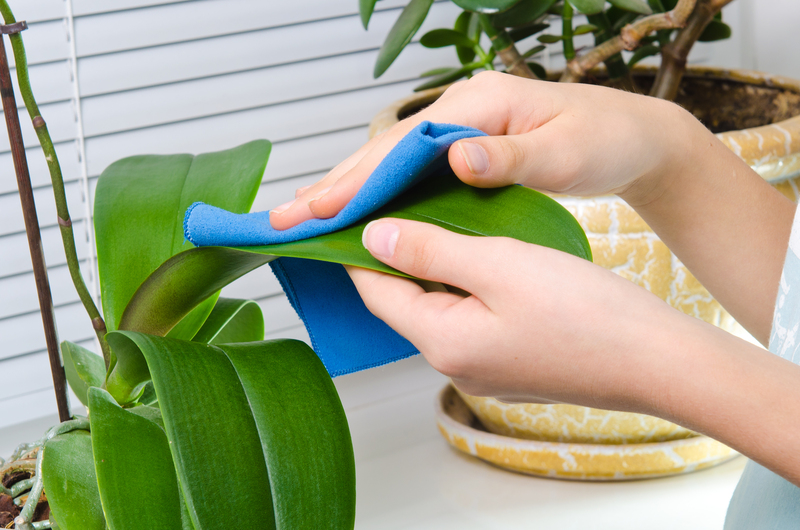Transform Mouldy Window Sills with Proven Cleaning Methods
Posted on 19/08/2025
Transform Mouldy Window Sills with Proven Cleaning Methods
Are you struggling with mouldy window sills in your home? Mould growth not only looks unsightly but can also cause damage to your property and impact your indoor air quality. Don't despair--transforming your mouldy window sills is entirely possible with expert tips and proven cleaning methods. In this comprehensive guide, we'll show you how to banish mould for good, protect your living space, and keep your home healthy and fresh.
Why Do Window Sills Go Mouldy?
Understanding the reasons behind mould growth on window sills is the first step in preventing and remedying the problem. Several factors contribute to this common household issue, including:
- Condensation: Warm indoor air meets cold glass, leading to moisture build-up.
- Poor Ventilation: Lack of fresh air circulation lets humidity linger.
- Leaky Windows: Faulty seals or frames allow rain and dampness inside.
- Organic Matter: Dust, dirt, and organic debris provide food for mould spores.
Mould thrives in moist, poorly ventilated environments--window sills are especially vulnerable due to frequent condensation and minimal airflow. Ignoring these conditions allows mould colonies to settle and spread.

The Risks of Leaving Mould Untreated
It's tempting to overlook a few spots of mildew, but neglecting mouldy window sills can have real consequences:
- Health Effects: Allergic reactions, respiratory issues, and exacerbation of conditions such as asthma.
- Structural Damage: Mould can rot wooden sills and deteriorate paint and sealants.
- Permanent Stains: Untreated mould may etch or stain surfaces, making restoration harder.
- Unpleasant Odours: Mould creates musty, lingering smells.
Act quickly to eliminate mould for a healthier home and lasting aesthetics.
Essential Supplies for Cleaning Mouldy Window Sills
Before you start cleaning window sills affected by mould, gather the right tools and cleaning agents. Proper supplies will make the process safer and more effective:
- Protective gloves & mask (to avoid contact and inhalation of spores)
- Safety goggles
- Soft scrubbing brush or old toothbrush
- Microfiber or disposable cloths
- Spray bottle(s)
- Cleaning solutions: white vinegar, baking soda, hydrogen peroxide, or specialist mould remover
- Bucket of warm water
- Optional: Mild detergent, bleach (for stubborn or severe infestations), painter's tape (to protect frames)
Proven Cleaning Methods to Transform Mouldy Window Sills
Step 1: Prepare the Area
- Open Windows: Increase ventilation and reduce exposure to cleaning fumes and spores.
- Protect Surroundings: Lay down towels or plastic sheeting to catch drips and debris.
- Wear Protective Gear: Always use gloves and a mask when disturbing mouldy areas.
Step 2: Dry Surface and Remove Loose Debris
- Wipe excess moisture from the sill with a dry cloth.
- Vacuum or gently brush away loose dirt and dust (dispose of or clean vacuum filter immediately after).
Step 3: Apply a Cleaning Solution
There are several proven cleaning solutions for mouldy window sills. Choose the one that best suits your needs:
-
White Vinegar:
Undiluted white vinegar is highly effective for killing mould spores.- Pour into a spray bottle.
- Spray liberally onto the affected area.
- Let sit for at least 60 minutes.
-
Hydrogen Peroxide (3% solution):
Hydrogen peroxide is a powerful antimicrobial and whitener.- Spray or pour onto the mouldy surface.
- Let stand for 15-20 minutes.
-
Baking Soda Paste:
- Mix baking soda and water to create a paste.
- Spread the paste over the mouldy areas and leave for 10 minutes.
- Mould Remover: Use a reputable, commercial mould removal spray following label instructions.
Step 4: Scrub and Remove Mould
- Use a brush or old toothbrush to gently scrub the treated area, focusing on crevices and corners.
- Wipe away loosened mould and residue with a damp microfiber cloth.
- If necessary, repeat the cleaning process for persistent stains.
Step 5: Disinfect If Needed
- For stubborn or deep-set mould on window sills, carefully apply a diluted bleach solution (1 part bleach to 10 parts water).
- Never mix bleach with vinegar or ammonia.
- Apply with a sponge, let sit for a few minutes, then rinse thoroughly.
Step 6: Dry Completely
- Dry the cleaned window sill thoroughly with a clean towel.
- Leave windows open to ensure the area is well-ventilated and moisture-free.
Natural Alternatives for Cleaning Mouldy Window Sills
Prefer eco-friendly or non-toxic methods? Many natural products effectively remove mould from window sills:
-
Lemon Juice: Contains citric acid that kills mould and leaves a fresh scent.
- Apply undiluted lemon juice, let sit, then scrub and wipe clean.
-
Tea Tree Oil: Natural antifungal and antibacterial properties.
- Mix 1 teaspoon of tea tree oil in 1 cup of water. Spray onto mouldy area, let dry (no need to rinse).
-
Grapefruit Seed Extract: A few drops in water can destroy mould spores without chemicals.
Spray and leave it to air dry.
How to Prevent Mould on Window Sills After Cleaning
Once your mouldy window sills are clean and fresh, take steps to prevent the problem from returning:
1. Improve Ventilation
- Open windows regularly, especially after showers or cooking.
- Install or use extractor fans in humid rooms.
- Consider a dehumidifier for persistently damp spaces.
2. Control Moisture
- Wipe condensation from window sills and glass each morning.
- Fix leaks, faulty window seals, or cracks in masonry that allow water ingress.
- Don't dry clothes indoors without adequate ventilation.
3. Keep Window Sills Clean
- Dust and clean sills weekly to remove dirt and organic debris.
- Regularly check for early signs of mould--tackle small spots immediately.
4. Use Anti-mould Paint or Sealant
- When repainting window sills, choose anti-mould or mildew-resistant paints.
- Seal bare wood and joints to prevent moisture penetration.
When Should You Replace a Mouldy Window Sill?
Occasionally, mould damage may be too extensive for cleaning and repair. Signs that replacement might be necessary include:
- Significant wood rot, warping, or crumbling of the sill material
- Persistent, deep-set black mould even after repeated cleaning
- Recurring mould due to structural leaks or underlying issues
If your window sill shows structural deterioration, consult a contractor or window specialist for a professional assessment.

FAQs: Cleaning and Preventing Mouldy Window Sills
What kills mould instantly on window sills?
White vinegar or hydrogen peroxide are both powerful, natural mould killers. They penetrate porous surfaces and kill spores on contact.
Can I use bleach to clean a mouldy window sill?
Bleach is effective on non-porous surfaces like plastic or metal, but it's less effective on wood. Use only as a last resort, and never mix with other cleaners!
Will painting over mould prevent its return?
No. Painting over untreated mould can lead to blistering and peeling paint. Always remove the mould and treat the underlying problem before repainting.
Is mould on window sills dangerous?
Mould can cause allergies, irritation, and respiratory issues--especially in children, the elderly, and people with compromised immune systems. Prompt removal is essential for health.
How often should I check my window sills for mould?
Inspect your window sills at least once a month, especially during wetter seasons or if you notice condensation.
Conclusion: Say Goodbye to Mouldy Window Sills for Good
Reviving your mouldy window sills doesn't have to be overwhelming. With the right proven cleaning methods, you can restore them to like-new condition while protecting your family and your home. By following these comprehensive tips--from deep cleaning to proactive prevention--you'll enjoy brighter, fresher, and healthier living spaces all year round.
Ready to banish window sill mould for good? Start today, and make mouldy, musty window sills a thing of the past!




